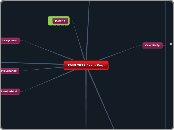par Magda Johnson Il y a 14 années
789
ITGS 2012 Exam Prep

par Magda Johnson Il y a 14 années
789

Plus de détails
http://www.ehow.com/about_5449736_advantages-online-booking-system.html
http://www.ehow.com/facts_4968346_disadvantages-online-booking.html
A smartphone is a device that lets you make telephone calls, but also adds features that you might find on a personal digital assistant or a computer. A smartphone also offers the ability to send and receive e-mail and edit Office documents, for example. While there is no standard definition of the term "smartphone" across the industry, there are a few features that you'll find on every smartphone. Here's a list: Operating System: A smartphone will be based on an operating system that allows it to run productivity applications, such as the BlackBerry OS, the Palm OS, or Windows Mobile. Software: A smartphone will offer more than just an address book. It may allow you to create and edit Microsoft Office documents or manage your finances. Web Access: A smartphones offer some sort of access to the Internet. You can use your smartphone to browse your favorite Web sites.
The Adobe Flash Player is software for viewing animations and movies using computer programs such as a web browser. Flash Player is a widely distributed proprietary multimedia and application player created by Macromedia and now developed and distributed by Adobe Systems after its acquisition. Flash Player runs SWF files that can be created by the Adobe Flash authoring tool, by Adobe Flex or by a number of other Macromedia and third party tools.
Adobe Flash, or simply Flash, refers to both a multimedia authoring program and the Adobe Flash Player, written and distributed by Adobe, that uses vector and raster graphics, a native scripting language called ActionScript and bidirectional streaming of video and audio. Strictly speaking, Adobe Flash is the authoring environment and Flash Player is the virtual machine used to run the Flash files, but in colloquial language these have become mixed: "Flash" can mean either the authoring environment, the player, or the application files.
Flash Player has support for an embedded scripting language called ActionScript (AS), which is based on ECMAScript. Since its inception, ActionScript has matured from a script syntax without variables to one that supports object-oriented code, and may now be compared in capability to JavaScript (another ECMAScript-based scripting language).
The Flash Player was originally designed to display 2-dimensional vector animation, but has since become suitable for creating rich Internet applications and streaming video and audio. It uses vector graphics to minimize file size and create files that save bandwidth and loading time. Flash is a common format for games, animations, and GUIs embedded into web pages.
The Flash Player is available as a plugin for recent versions of web browsers (such as Internet Explorer, Mozilla Firefox, Opera, and Safari) on selected platforms. The plugin is no longer required for Google Chrome since Google integrated the file into the distribution. Adobe states that each version of the plugin is backwards-compatible, with the exception of security changes
In information technology, hardware is the physical aspect of computers, telecommunications, and other devices. The term arose as a way to distinguish the "box" and the electronic circuitry and components of a computer from the program you put in it to make it do things. Hardware includes not only the computer proper but also the cables, connectors, power supply units, and peripheral devices such as the keyboard, mouse, audio speakers, and printers. Hardware is sometimes used as a term collectively describing the physical aspects of telephony and telecommunications network infrastructure.
ACID: (atomicity, consistency, isolation, durability) is a set of properties that guarantee database transactions are processed reliably. In the context of databases, a single logical operation on the data is called a transaction. For example, a transfer of funds from one bank account to another, even though that might involve multiple changes (such as debiting one account and crediting another), is a single transaction.